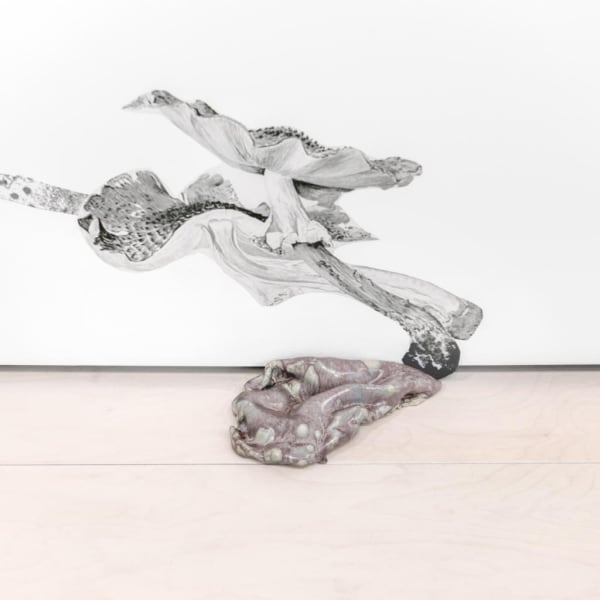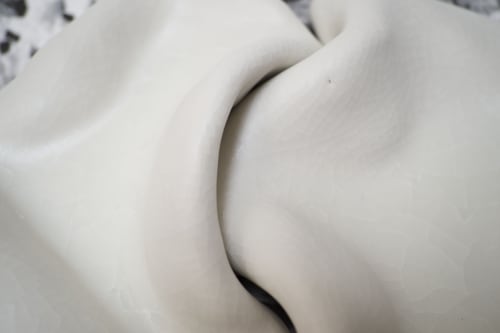Lucía Pizzani: A Garden for Beatrix
Lucia Pizzani’s lifelong captivation with nature and conservation biology permeates a large part of her artistic practice. And in her first show at Cecilia Brunson Projects the Venezuelan-born artist develops this through a kindred spirit, Beatrix Potter, among other things a natural scientist and a pioneer in fungal spore reproduction. Impeded from a scientific career by her gender, Potter filtered her fascination with the environment through her literary journey. Just like Potter, Pizzani weaves into her narrative the inexorable cycle of life and death, growth and decay, but in her case using performance photography, sculpture, installation and video instead of children’s literature.
In Pizzani’s video work Unidentified Women gender itself is brought into focus through her exploration of some of the earliest historical photographs of women most of them captioned as “unidentified” as opposed to men’s which are traditionally identified. Time and decay have wrought a ghostly disintegration of their images into barely discernible figures. Ink smudges and misprints bestow on the women a singularly Victorian mixture of dust, soot and ectoplasm. Their disintegration and, in many cases, lack of identifiable features becomes a dual narrative of the universal decay of life, and the historical blurring of female identity.
In A Garden for Beatrix a sculptural wall installation of fungi reveals the shared interest with Potter in its entirety. Pizzani’s attraction to the wild, organic forms of mushrooms manifests in an almost magical growth where translucent white ceramics grow out of works on paper, evolving from two to three dimensions and from mushrooms into forms emulating female pudenda. In this site-specific installation, the works blend into a large scale collage that incorporates reworked photographs and Potter’s own illustrations that are altered and transformed to become this “garden piece”, which is a tribute to her. The unique, biological kingdom of the fungus (neither plant, animal nor bacterium) occupies the hinterland between life and death, growth and decay, saprophyte and parasite. And the project continues a theme of Pizzani’s earlier Orchis (2011) in which semi-abstracted images of orchid plants play with its Greek etymology ‘Orchis’, meaning testicle. Where before the orchid’s bulbs derive its life-deriving male-organ root Pizzani now uses the fungi to subvert this idea toward the female, re-establishing balance. And by using traditional media (ceramics and illustration) in a conceptual way a new fiction is created that pulsates, germinates and pulls us into the Nature she represents.
In Sagrario Pizzani’s attention turns from decay to emergence. The works derive from a prior performance piece in which the artist revolved a fabric-covered body evoking the metamorphosis of a butterfly followed by its emergence from the cocoon. In this series the contours of the female anatomy describe different chapters of fictional narratives. She simultaneously draws out the paradoxical restrictive and emerging nature of life, not just of womanhood, but birth, puberty and adolescence. And in documenting this performance with collodion, wet-plate photography, she returns us to the monochrome origins of photography of Unidentified Women, with ephemeral, surrealist overtones and enigmatic obscurity.









